Check out this 30,000-year-old underwater cave!
- Published
- comments
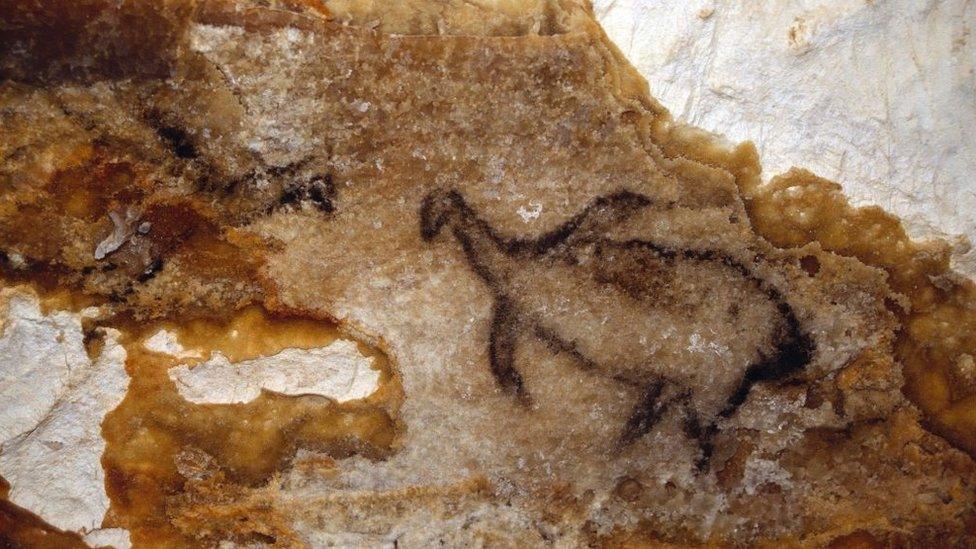
The walls of the cave feature many different types of wildlife - from prehistoric cows to horses and penguins!
Scientists in France are racing to save a 30,000-year-old cave off the coast of south-west France.
Rising sea levels and plastic pollution are threatening to wash away the pre-historic artwork inside the cavern, which can only be accessed by diving to the bottom of the Mediterranean sea.
Archaeologists say it's the only place in the world where cave paintings of prehistoric marine life have been discovered.
Experts have digitally mapped the cave and have now opened an almost life-sized 3D replica of the cave along with its paintings nearby, which they hope will help researchers who are not able to physically get inside the cave learn more.
What did experts find?
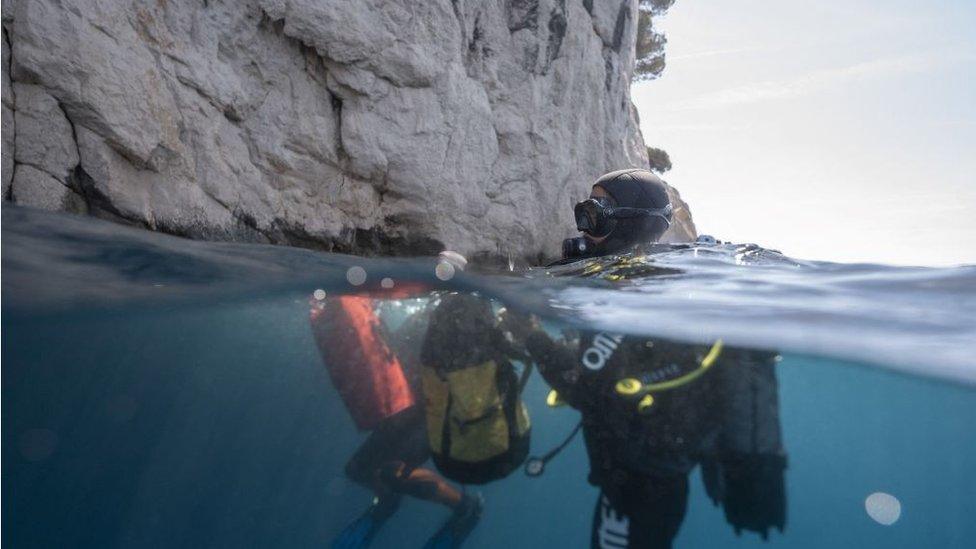
Archaeologists have to dive to the bottom of the Mediterranean sea in order to get to the cave
The cavern - called the Cosquer cave - is situated near the city of Marseille, and was first discovered nearly 40 years ago by a French diver who said he stumbled across it by chance.
Since then dozens of research missions have been carried out to study and preserve the site and make a record of the many paintings and carvings that are inside.
The cave is located 37 metres underwater and in order to get inside, divers need to swim through a 137 metre tunnel into the rock, passing through the mouth of the cave until they emerge into a huge cavern on the other side.
The walls of the cave feature lots of different types of wildlife including horses, deer, bison, seals, penguins, fish - and even a cat and a bear!
In total experts have found 229 artworks on the walls covering 13 different species.
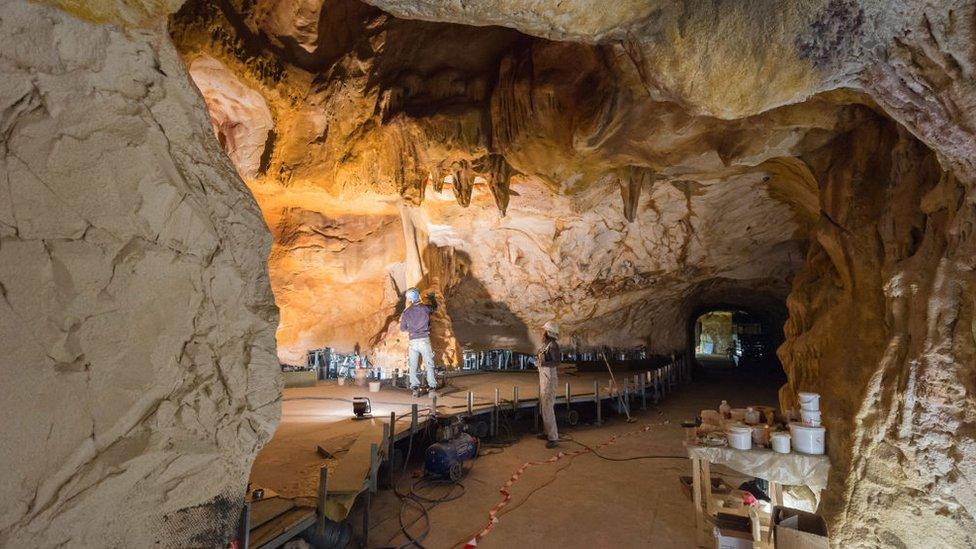
Experts have been constructing a copy of the cave to preserve the findings for future generations
They also found that Neolithic men and women left a mark of themselves, with 69 red and black hand prints that can also be found on the walls.
Archaeologists believe that the cave was occupied from 33,000 to 18,500 years ago.
Around ten years ago experts began to notice a rapid rise in the sea level which was leading to irreversible damage to some of the images.
They found microplastic pollution was also making the damage to the paintings even worse.
This was one of the reasons that scientists decided to make a replica of the site, including the paintings and carvings, using 3D data gathered by the archaeological team.
Researchers hope that by making a near-life size reconstruction of the cave, it will help experts in the future who want to study it, without needing to be there.
Diver Bertrand Chazaly, said "our virtual Cosquer cavern, which is accurate to within millimetres, will be indispensable for researchers and archaeologists who will not be able to physically get inside."
- Published24 February 2021
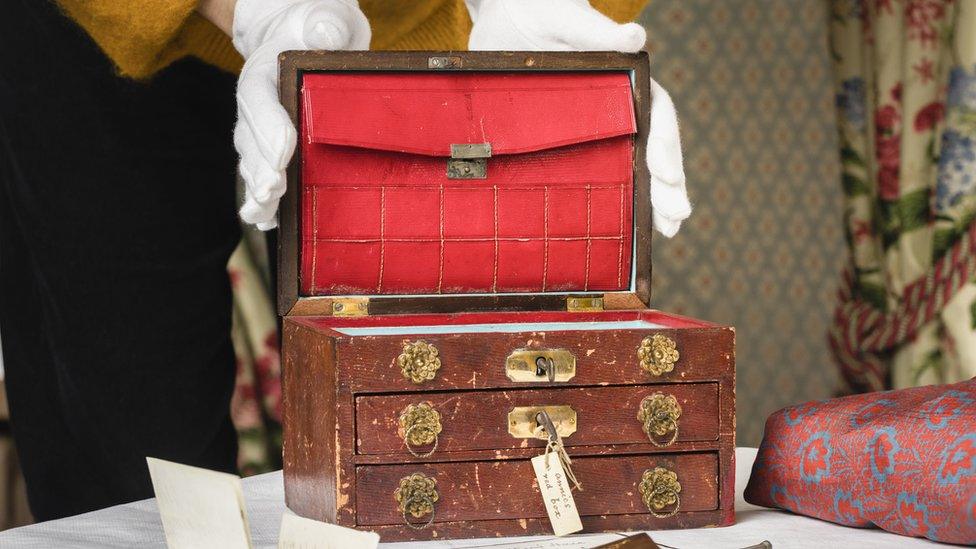
- Published16 May 2022
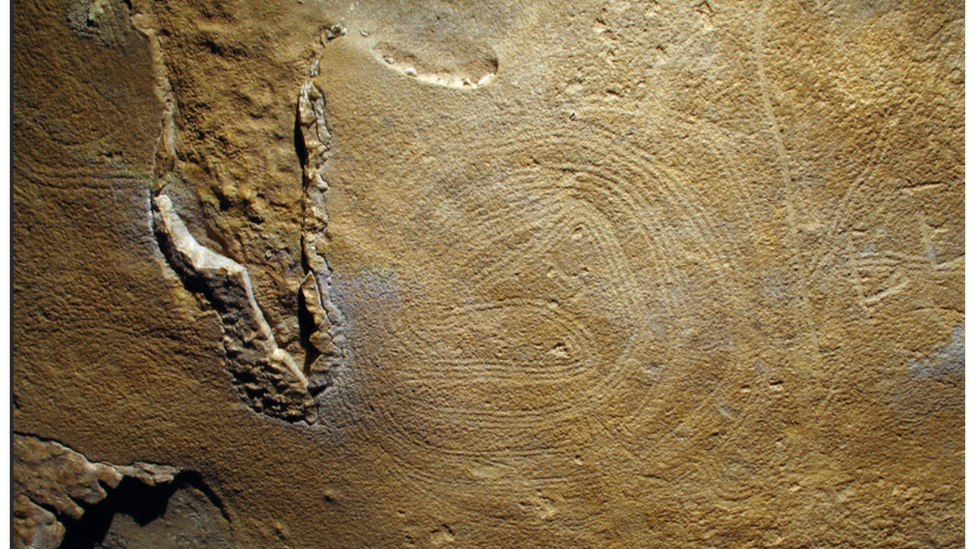
- Published12 January 2022
